Is theatre always supposed to be immersive? In fact, in the very beginning, theatre is about the act of viewing. The word theatre originates from “theatron,” meaning “a place for viewing [spectacles].” Even though what happens in a theatre involves more than “viewing,” the viewing behavior in theatre is related to the immersive effect fabricated through the use of light. Spectators in modern theatres wait for the lights to be dimmed before a play starts. They wait in the dark for curtains to rise, and then watch one scene after another presented through the use of stage light. Scenes, contained right in the frame, supersede one another as acts of a play change. Curtains rise. Curtains drop. Meanwhile, spectators in the dark feel as though they were pulled away from the here-and-now and immersed in spectacles illuminated by light.
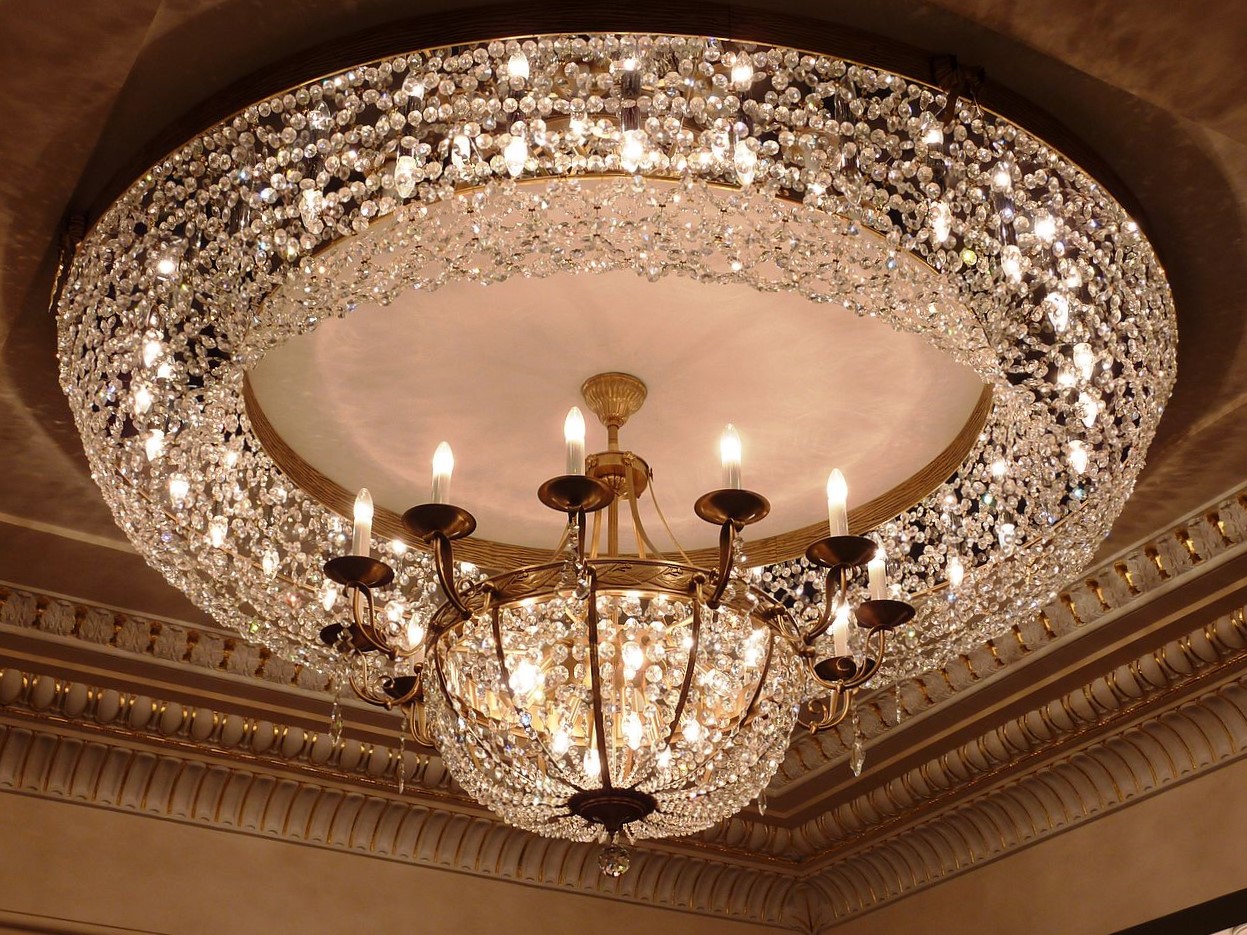 Candle lights are no longer in use in modern theatres, but lights are still installed on candlestick-like decorations, glittering through refractions of luxurious ornaments. Source: Wikimedia Commons; photo by Rudolf Simon
Candle lights are no longer in use in modern theatres, but lights are still installed on candlestick-like decorations, glittering through refractions of luxurious ornaments. Source: Wikimedia Commons; photo by Rudolf Simon
In modern proscenium-arch theatre, there is no viewing without spectacles; and there are no spectacles without light. Theatre is under the command of light. However, commands of “light” in theatre work only when spectators are submerged in the dark. Through getting submerged in the shade, spectators are then able to feel the “disappearance” of themselves. Why do they “disappear”? In theatre, not being watched is like ceasing to exist. When a spectator disappears in the dark, she/he cannot see others, nor can she/he be seen. It is exactly this invisibility which enables “viewing” to happen in the brightness. That is, under the command of light, one sees what they are dictated to see. Such a feeling of disappearing in the dark and, at the same time, carrying out the act of viewing, is a kind of “immersion” in theatre which involves “getting immersed” in spectacles that are dictated by light. However, what disappears is not only the spectators but also the technique of light: lighting. Lighting reveals the technique of utilizing light to present spectacles. The aim of theatre to have spectators immersed in certain spectacles presented through lighting would be undermined by the visibility of the technique which only disrupts the immersion of spectators—once spectators discover the technique, spectacles would no longer function to serve an “illusion.” As a result, stage lights are always hidden behind the “frame.” Only what light dictates spectators to see can go into the “frame” in theatre.
Unlike lights in public areas seen by all theatre guests, stage lights are not usually ornamented with ostentatious embellishment which envelopes spectators with an illusion invoked by the confusion as though one was still in a Baroque theatre, an illusion that is about illumination. Even if candle lights are no longer in use in modern theatres, lights are installed on candlestick-like decorations; even if there is no flickering of candle fire, lights still glitter through refractions of luxurious ornaments, in order to summon an illusion—as though what is dimmed before curtains rise was one after another candle fire on candlesticks in a Baroque theatre. The fact that candles cannot be put out altogether is forgotten. However, only when candle fires can also be dimmed all at once are spectators able to feel the disappearance of themselves, and to further immerse in spectacles presented through light. Immersion, in this sense, can be seen as a modern experience that involves light and spectatorship in the dark. In relation to lights hidden behind the “frame” of a stage, lights in guest areas decorated like candle fires on candlesticks may indicate more clearly what immersion in modern theatre is about: all history (such as Baroque theatres and history of theatre) is but an illusion invoked by light. This illusion invoked by light, however, will as well be dimmed before curtains rise, so that spectators disappear, so that spectators in the dark immerse once again in illuminated spectacles in the frame—in yet another illusion in modern theatre.
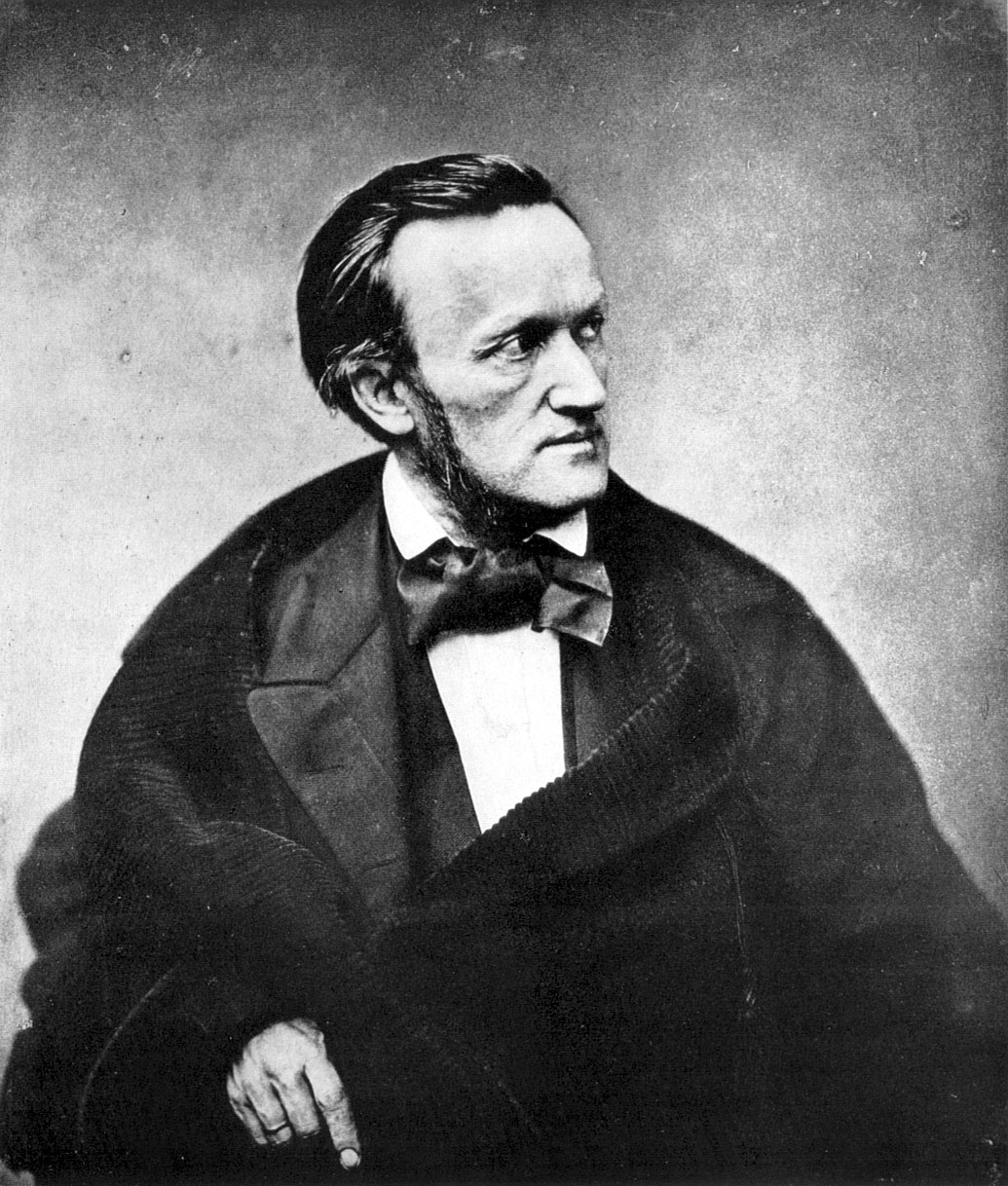
While theatre presents one after another immersive spectacle under the light’s command, another technique contributing to the feeling of oneself disappearing even more considerably is there too: the music emerging from the dark. The first theatre designed to make spectators hear music emerging from the dark is Bayreuth Festspielhaus that was drafted and planned by German musician, Richard Wagner, for the presentation of his “Musikdrama” pieces. Although the design was possibly a serendipitous mistake, Wagner had already contemplated the “immersion” spectators can experience in the dark. Besides light, music had intrigued Wagner, even to a greater extent. What Wagner is best known for is his vision of “Gesamtkunstwerk.” Although the opera before him incorporates elements such as poetry, music, dance, and theatre, it is still not the “Gesamtkunstwerk” he pictured. In his vision, the idea of “whole [gesamt]” doesn’t merely refer to a collection of all art forms. It is, instead, a “whole” which cancels all boundaries among arts. In order to integrate all arts into a “whole,” the key lies in music. Wagner believes music is most capable of canceling all boundaries among arts. Therefore, what Wagner wants is not “opera (Oper)” but “music drama (Musikdrama),” a “Gesamtkunstwerk” which blends all art forms into an integrated “whole” in theatre through the use of music. There are plenty of discussions and interpretations of Wagner’s vision of “Gesamtkunstwerk” (and its implications about complex relations between art and politics). The core of his vision is manifested clearly in Bayreuth Festspielhaus which he designed to fulfill “Gesamtkunstwerk:” spectators in the shade immerse not only in the illuminated scenes but even more so in the music that emerges from the dark. While many theatres are built to host musicians in front of the stage, Wagner designs an alternative arrangement of placing musicians beneath the stage in Bayreuth Festspielhaus so that spectators can enjoy feeling immersed in music coming from the dark even more. Spectators in the shade feel themselves disappearing not merely because they are not seen. They feel so while getting absorbed in the music.
At the time, music is seen as the art that manifests “Being” the most. And the concept, “Being,” is thought to mean “change”—for instance, the “being” of a human is in constant “change.” The self at present always differs from the self at the next moment. A human is a being-towards-death. While proceeding towards death, a being also proceeds towards disappearance amidst changes. The eventual disappearance of music is like the inevitable death of being. Therefore, listeners who are immersed in music can always feel as if their beings-towards-death were disappearing in the music proceeding towards disappearance. Nonetheless, while music is considered the art that manifests “Being in constant change” the best, it is thought to possess a certain “spirit” too. That is, “Being” is not merely in constant change; it further prompts itself—amidst changes—to return to self, to recognize self, and then to go beyond the limit of changes. The act of listening while immersed in music allows one to feel this “spirit.” Listeners constantly perceive “transformations” in music. More importantly, after modern theories of harmony are established, these transformations in music are no longer random alterations but more like a desire of music for “transformation.” Such desire possibly gravitates towards the “tonic” discussed in modern theories of harmony. No matter how music alters, a musical piece has to end with the “tonic.” The desire of music is the desire for the “tonic.” Despite desiring for a goal at the “tonic”, changes in music still have to undertake many deviations and resistance which make music and the “being” of a human more alike—a being desiring for “transformation.” The “being” here is no longer a being constrained by changes but one desiring for “transformation.”
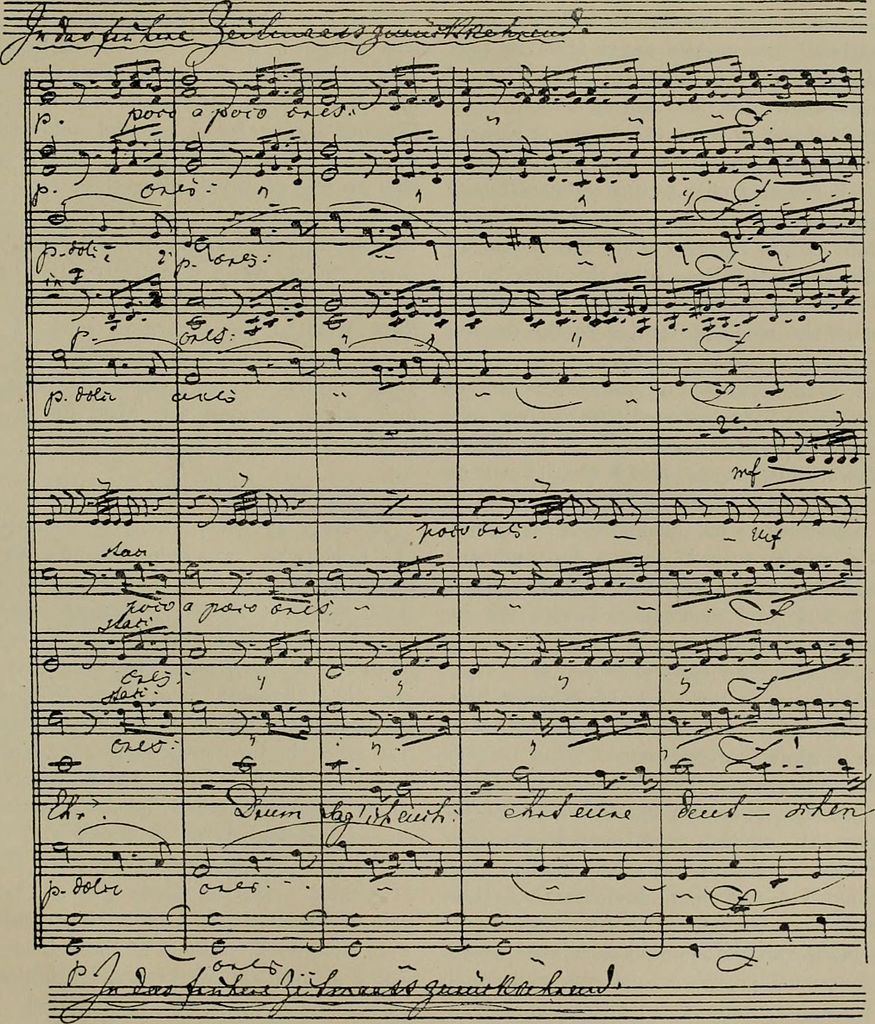 Wagner’s original music sheets of Die Meistersinger. Source: Internet Archive Book Images. Excerpt from scanned pages of Modern Music and Musicians, the quality of which may be adjusted due to digitalization
Wagner’s original music sheets of Die Meistersinger. Source: Internet Archive Book Images. Excerpt from scanned pages of Modern Music and Musicians, the quality of which may be adjusted due to digitalization
Even though music disappears as beings-towards-death do, the transformation desired by Being brings a different layer of meaning to “disappearance.” With music’s disappearance, the music proceeding towards the “tonic” manifests the “spirit” of Being. “Change” begins with the disappearance of music, whereas “transformation” concerns the desire of music. It is the desire of music (the desire for arriving at the “tonic” despite having to undertake deviations and resistance) that makes “changes” no longer mere “changes” but “transformations.” Accordingly, music that eventually disappears, over time, is not really felt to be vanishing. In fact, it is exactly music’s “disappearance” that allows music to have its desired “transformation” in its constant “change.” It is music’s “disappearance” that facilitates the possibility of the spirit of Being. Music, considered to manifest the being of a human, now, in turn, becomes a projection for the being of a human: like music, the being of a human is not supposed to be a mere being-towards-death in constant change that is constrained by changes. Compared to changes during the journey of a being proceeding towards death, what’s more important is the transformation desired by Being that makes the spirit of Being possible. In order to facilitate the possibility of the “spirit” of Being, Being has to go through deviations and resistance like music does, in order to overcome the limitation of Being—death and changes during the journey towards death, to return to self, to recognize self, so that Being “transforms.” In this sense, music is considered the manifestation of “Being is transformation.” Consequently, the disappearance of music is like the death of being. And, moreover, the desire of music is like the desire of Being; the transformation of music is like the transformation of Being; the spirit of music is like the spirit of Being. When music manifests the spirit of Being through transformation, the spirit of Being is no longer the spirit of one musician, an individual being, but the spirit of Being which bypasses the limitations of individual beings. Therefore, music felt to be eventually disappearing doesn’t really cease to exist. The disappearance is what accomplishes the spirit. When music that disappears gradually makes listeners feel as though their own beings were disappearing in music, it means to disappear in the spirit of music, in the spirit of Being, in order to become the spirit of music, the spirit of Being. To be immersed in music, in fact, is to let one’s own individual “being” disappear in order to accomplish something grander—the spirit of “Being,” which, in Wagner’s “Musikdrama” and his vision of “Gesamtkunstwerk,” refers to the German (Deutsch) spirit.
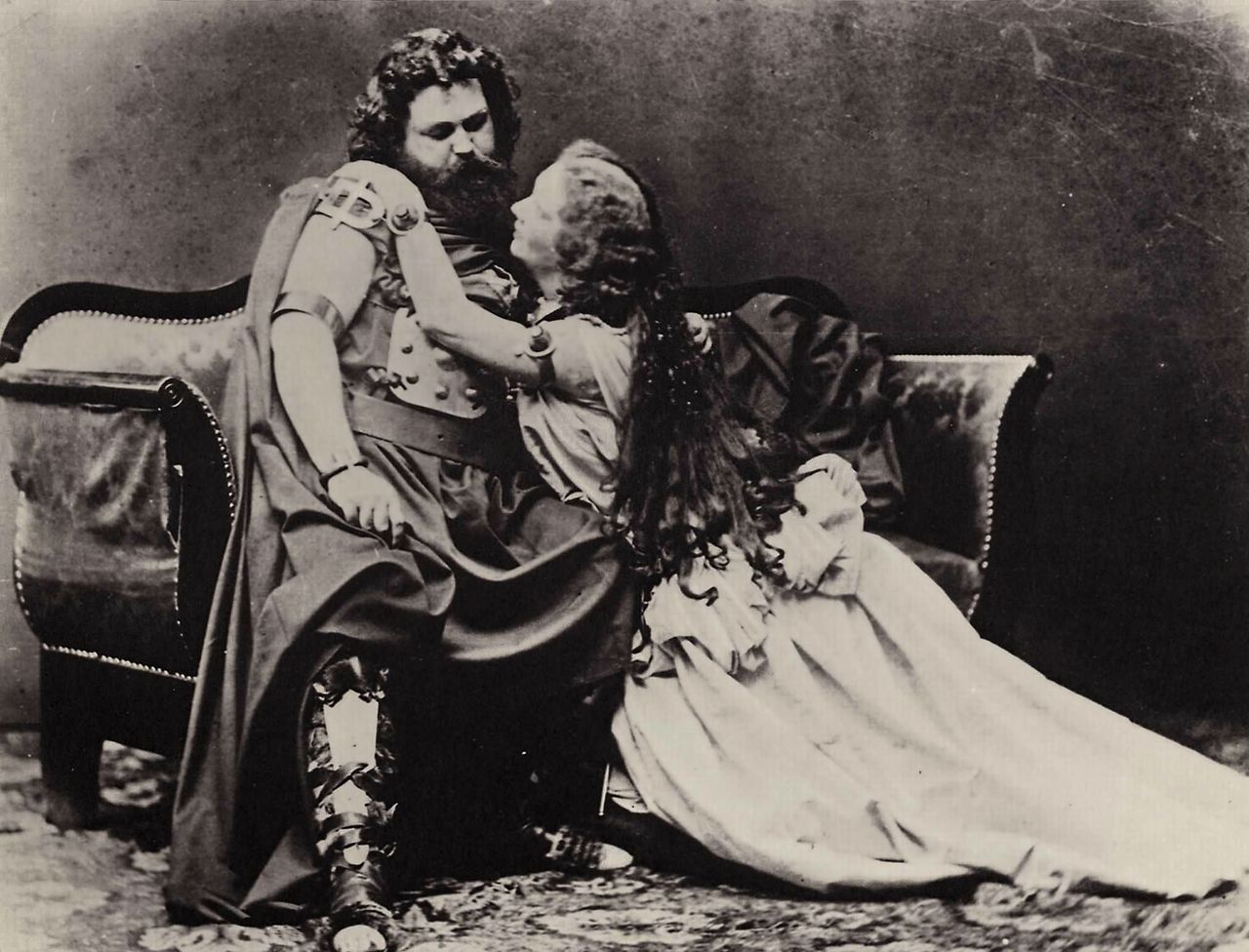 Wagner’s first Musikdrama Tristan und Isolde premiered in 1865. Source: Wikimedia Commons; photo by Joseph Albert
Wagner’s first Musikdrama Tristan und Isolde premiered in 1865. Source: Wikimedia Commons; photo by Joseph Albert
Spirit, a word deeply associated with concepts such as soul or breath [what animates the body] in western cultures, always involves a certain imagination of “sound.” Sound is related to breath: through sound, one’s breath can be heard; through breath, one’s soul can be felt. It is easier to feel a person’s soul by hearing him/her than seeing him/her. Changes in the voice/sound reveal changes in one’s breath, and changes in one’s breath give out clues about changes in one’s soul. More importantly, the breath which enables the voice to be heard is physically perceptible—like the caress of the breeze. It is as though the voice/sound and even the soul were palpable through breath. In western cultures, the spirit of Being is almost always considered at distance from the physical body in most discussions. Nonetheless, music’s manifestation of the spirit makes it possible for the spirit of Being that is away from the body to be physically perceptible. As the physical body senses music, the perception of music by the body, in turn, makes the listener feel as though the body was disappearing—disappearing in the music the body senses. This is an illusion invoked by “the act of listening while immersed in music” which is not like an illusion: that the body is feeling as though it was disappearing in music is an illusion because the body doesn’t literally disappear in music and because the body is required to feel and perceive music. However, it is exactly the body which perceives music that makes the illusion not like an illusion. The illusion that is not like an illusion of “the body immersed in music as though it was disappearing in spirit” is the key for music to cancel boundaries of all art forms in theatre according to Wagner’s vision of “Gesamtkunstwerk.” After all, music can make one’s individual “being” disappear; it can, of course, cancel the boundaries of all art forms to accomplish the spirit of “Being” (that is, the German spirit). Spectators in the dark immerse not only in the illuminated scenes but also in music while disappearing in the spirit at the same time.
Adolf Hitler who has once been immersed in Wagner’s Musikdrama pieces may have been driven by such desire for the spirit, which turns politics into art and which allows Being to be immersed in the art of politics. The German spirit desired by politics becomes the spirit of art perceptible by physical bodies. However, like the spirit desired by Wagner’s music, the spirit perceptible by physical bodies needs to make the body feel as though it was disappearing. The reason is simple: only when this individual “being” disappears is the spirit of “Being” possible. And this illusion of “the body about to disappear in the German spirit” may have found its manifestation in the wars waged by Nazi Germany. According to the observation of Walter Benjamin, a German philosopher and cultural critic who has deeply recognized and felt the intricate changes in politics and art through his body and soul, it is possible that war is the ultimate “Gesamtkunstwerk.”
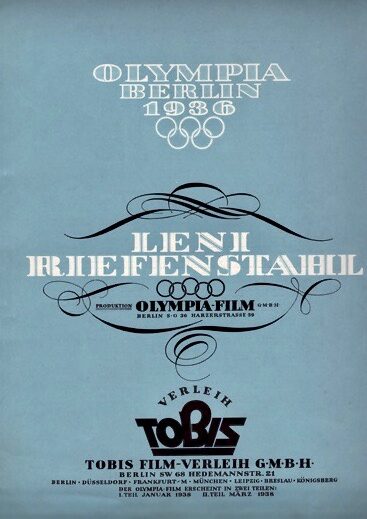 The back of the pamphlet for Olympia (1937/1938) published by OBIS Film-Verleih G.m.b.H., a German film production and film distribution company. Source: Wikimedia Commons
The back of the pamphlet for Olympia (1937/1938) published by OBIS Film-Verleih G.m.b.H., a German film production and film distribution company. Source: Wikimedia Commons
Indeed, war is a “Gesamtkunstwerk” which requires bodies and which further requires bodies to get immersed [in a situation] to an extent that they disappear. For Nazi Germany, wars are waged to fulfill the German spirit, the spirit of Being. However, this doesn’t mean that bodies are not important. In Wagner’s Musikdrama pieces, it is the body perceiving music that makes the illusion of the disappearing body less like an illusion; in Nazi Germany’s “Gesamtkunstwerk”, on the other hand, bodies are illuminated as one after another spectacle, seen in many shots in Leni Riefenstahl’s film of Olympia held by Nazi Germany. The body required by Nazi Germany is a body which desires for the spirit like music does, a body which transcends constant “changes” during the journey of a being proceeding towards death while desiring for “transformation.” Perhaps a body transcending constant “changes” during the journey towards death and desiring for “transformation” manifests the German spirit more than the body of a “being,” so it is recorded and made into a spectacle under the light. The divers in the Riefenstahl’s film for Olympia, for instance, eventually look as though they were flying instead of actually diving in the pictures. Through one after another shot of athletes leaping from a springboard, Riefenstahl fabricates a world of athletes flying across the sky. And the viewer almost cannot tell whether they are flying or falling.
This illusion of bodies keeping flying across the sky and never falling, illuminated and presented by light, is not happening in the frame of theatre in Bayreuth Festspielhaus designed by Wagner for his Musikdrama. Similarly, wars waged by Nazi Germany, like Olympia, are “Gesamtkunstwerks” far removed from the theatre, from the frame. It is more wholesome than a whole, more immersive than immersion. Is the body perceiving the spirit and feeling as though it was disappearing in the spirit, after all, flying or falling? Do the transformation desired by Being and the spirit made possible by transformation happen under the light or in the dark?